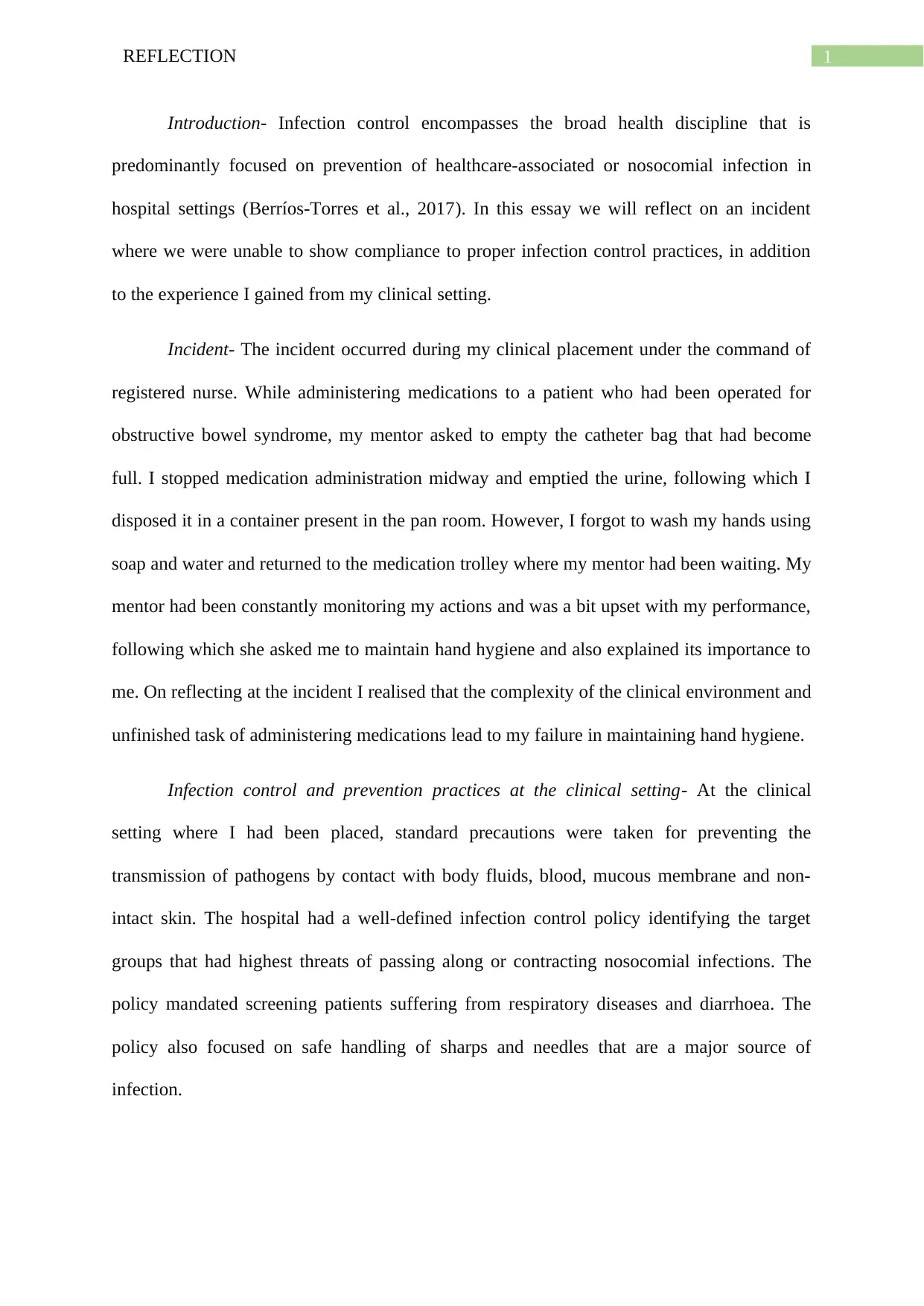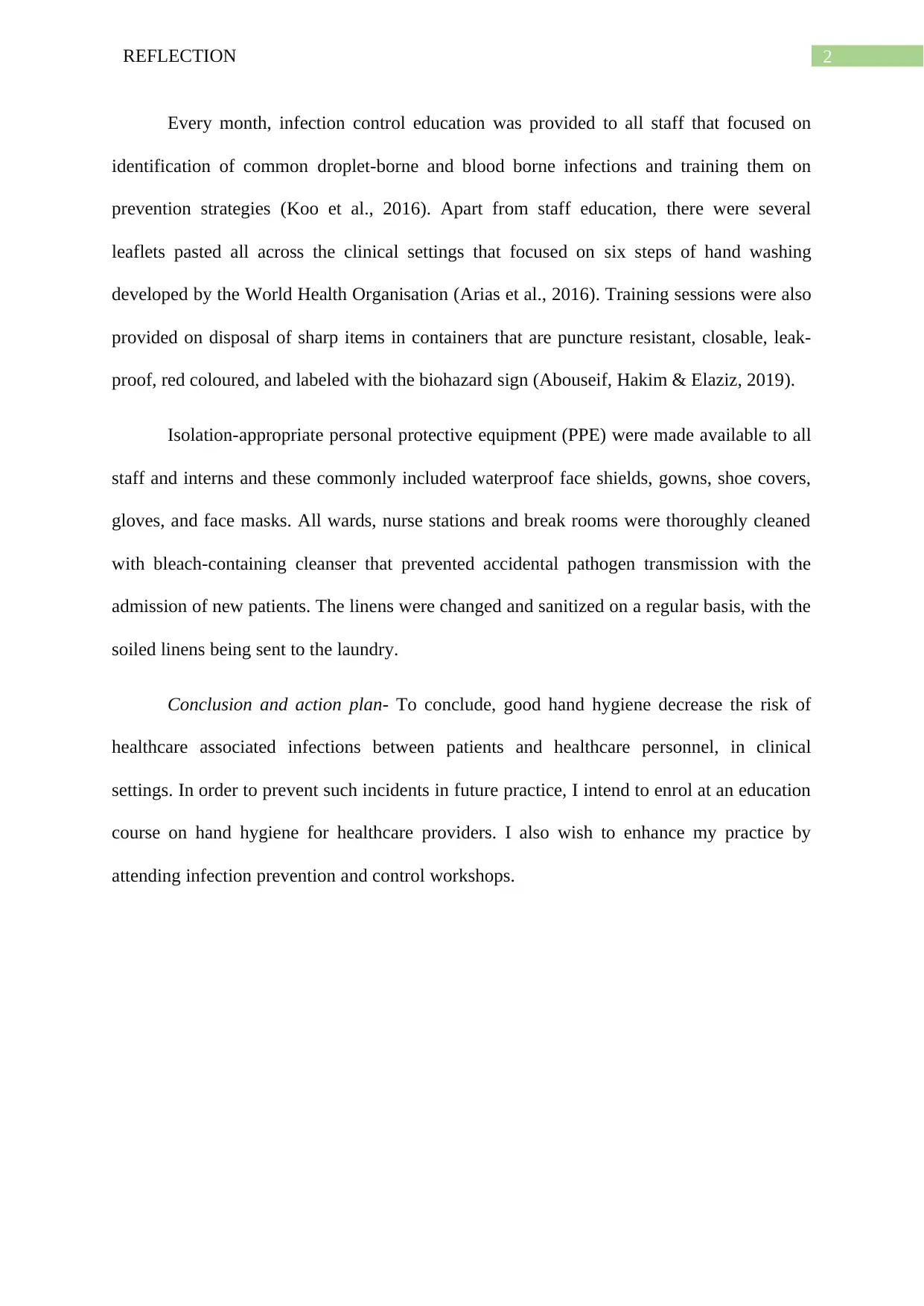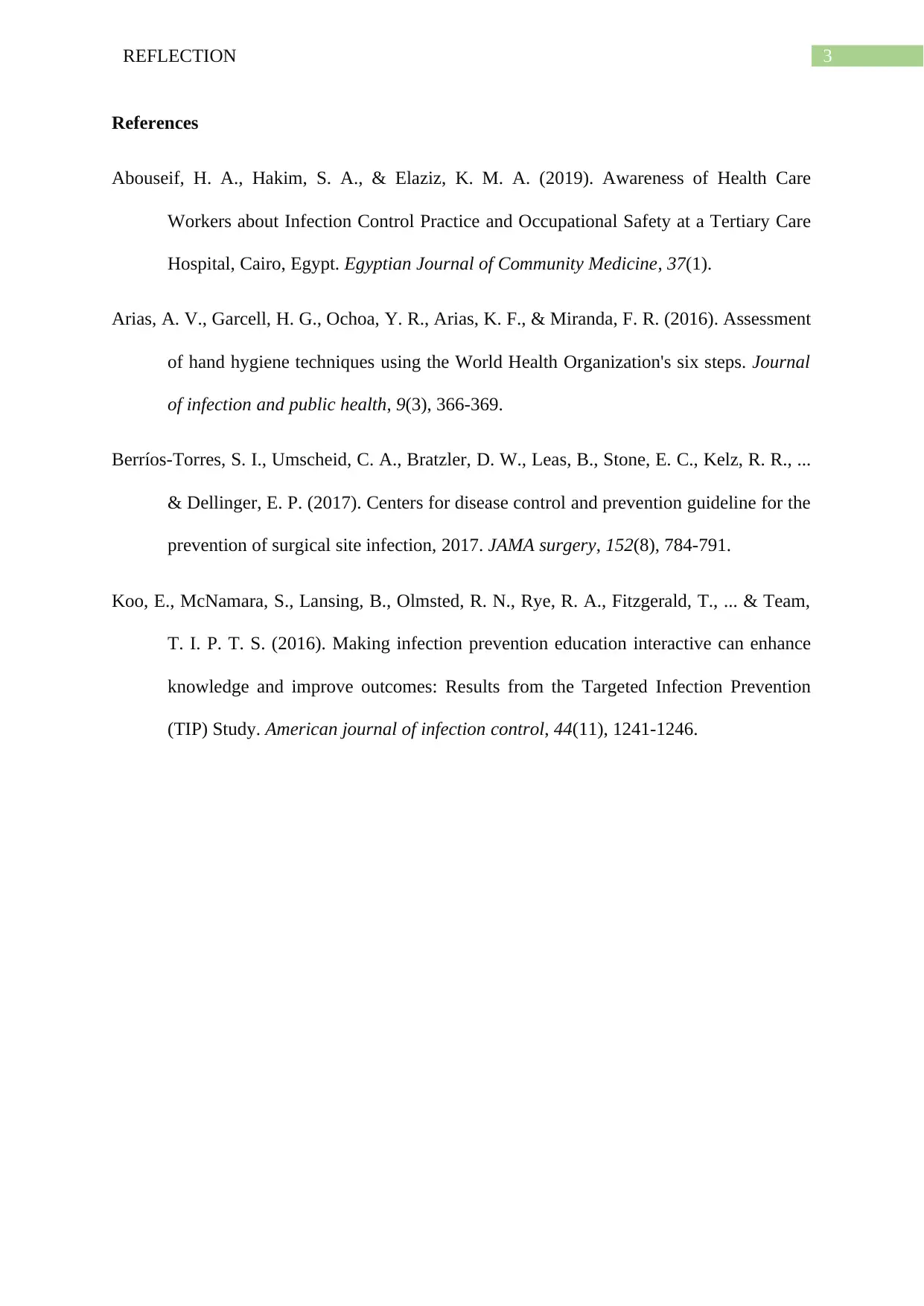Reflection on Infection Control Practices in Healthcare Settings
VerifiedAdded on 2022/08/13
|4
|851
|17
Journal and Reflective Writing
AI Summary
This reflective essay details a student's experience with an infection control incident during a clinical placement. The student recounts a situation where they failed to adhere to proper hand hygiene protocols after emptying a catheter bag, leading to a learning opportunity. The paper discusses the importance of infection control practices, including standard precautions, the hospital's infection control policies, staff education, and the use of personal protective equipment (PPE). The student reflects on the incident, identifies contributing factors such as the complexity of the clinical environment, and outlines an action plan to improve future practice, including enrolling in a hand hygiene course and attending infection prevention and control workshops. The essay emphasizes the critical role of hand hygiene in preventing healthcare-associated infections and improving patient safety.
1 out of 4











![[object Object]](/_next/static/media/star-bottom.7253800d.svg)